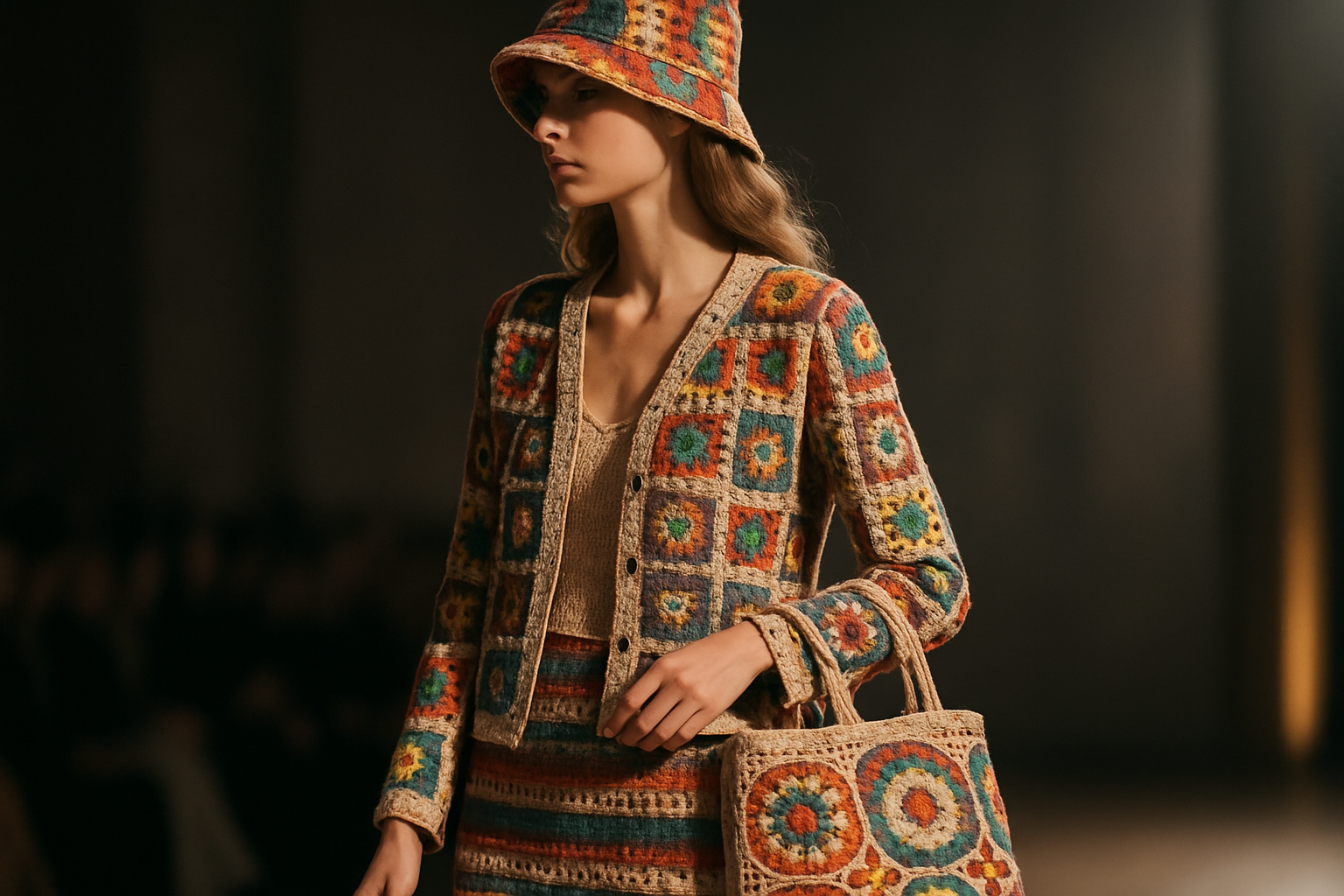The Renaissance of Crochet: From Granny Squares to High Fashion
In a world of fast fashion and mass production, an unexpected contender has emerged as a frontrunner in the style stakes. Crochet, once relegated to the realm of cozy blankets and quirky doilies, has undergone a remarkable transformation. This age-old craft has woven its way into the heart of high fashion, captivating designers and fashionistas alike with its unique blend of nostalgia and innovation.

The Origins of Crochet: From Necessity to Artistry
Crochet, derived from the French word croche meaning hook, has a rich history dating back to the early 19th century. Originally developed as a cheaper alternative to lace, this craft quickly spread across Europe and the Americas. Unlike its cousin knitting, crochet uses a single hook to create intricate loops and patterns, allowing for greater flexibility and creativity in design.
Throughout the 20th century, crochet experienced waves of popularity, often associated with domestic crafts and hippie culture. However, it wasn’t until the late 2010s that crochet began to shed its homespun image and catch the eye of high-end designers. This shift marked the beginning of crochet’s transformation from a humble hobby to a sought-after fashion statement.
The Runway Revolution: Crochet in High Fashion
In recent years, luxury fashion houses have embraced crochet with open arms, elevating the craft to new heights. Designers like Gabriela Hearst, Jonathan Anderson, and Simon Porte Jacquemus have incorporated crochet into their collections, showcasing its versatility and contemporary appeal. From delicate evening gowns to structured daywear, crochet has proven its ability to adapt to various styles and occasions.
The appeal of crochet in high fashion lies in its unique texture and handcrafted quality. In an era where consumers are increasingly valuing authenticity and sustainability, crochet offers a tangible connection to artisanal techniques. Its intricate patterns and labor-intensive process add a layer of exclusivity to garments, appealing to those seeking one-of-a-kind pieces.
Street Style Sensation: Crochet for Everyday Wear
While crochet has made waves on the runway, its true renaissance can be seen in street style. Fashion influencers and style-savvy individuals have embraced crochet as a versatile addition to their wardrobes. From chic crop tops to statement bags, crochet pieces are being incorporated into everyday outfits with surprising ease.
The beauty of crochet in street style lies in its ability to add texture and interest to simple looks. A crochet cardigan can elevate a basic jeans-and-tee combo, while a crochet bucket hat can add a playful touch to a summer ensemble. This accessibility has helped crochet transition from high-end runways to the closets of fashion enthusiasts worldwide.
The Sustainability Factor: Crochet’s Eco-Friendly Appeal
In an industry increasingly focused on sustainability, crochet has emerged as a champion of eco-friendly fashion. The slow, handcrafted nature of crochet aligns perfectly with the principles of slow fashion, encouraging a move away from mass-produced garments. Additionally, crochet’s adaptability to various materials, including recycled yarns, makes it an attractive option for environmentally conscious designers and consumers.
Many brands are now offering crochet pieces made from sustainable materials, tapping into the growing demand for ethical fashion. This eco-friendly aspect of crochet not only appeals to environmentally conscious consumers but also adds depth to the craft’s revival story, positioning it as a technique for the future of fashion.
DIY Renaissance: The Return of Handmade Fashion
Perhaps one of the most significant aspects of crochet’s renaissance is the resurgence of DIY fashion. Social media platforms like Instagram and TikTok have become hubs for crochet enthusiasts to share patterns, techniques, and finished projects. This community-driven aspect of crochet has reignited interest in handmade fashion, particularly among younger generations.
The DIY crochet trend has led to a boom in yarn sales and a renewed interest in craft stores. Many fashion-forward individuals are now creating their own crochet pieces, from simple accessories to complex garments. This hands-on approach to fashion not only allows for personalization but also fosters a deeper appreciation for the craft and its rich history.
Styling Crochet: Tips for Incorporating the Trend
-
Balance textures: Pair crochet pieces with smooth fabrics like silk or denim to create contrast
-
Mix modern and vintage: Combine a crochet top with tailored trousers for a contemporary look
-
Accessorize wisely: Start small with crochet accessories like bags or hats to ease into the trend
-
Layer strategically: Use crochet as a layering piece, such as a lightweight cardigan over a slip dress
-
Play with colors: Experiment with bold, multicolored crochet pieces to make a statement
-
Consider the occasion: Opt for finer, more delicate crochet for formal events and chunkier styles for casual wear
As crochet continues to weave its way through the fabric of contemporary fashion, it’s clear that this craft has transcended its humble origins. From luxury runways to DIY projects, crochet has proven its versatility and enduring appeal. Its renaissance speaks to a broader shift in the fashion industry towards craftsmanship, sustainability, and individuality. As we look to the future of fashion, crochet stands as a testament to the power of reinvention, reminding us that sometimes, the most innovative trends have roots in the past. Whether you’re a seasoned fashionista or a curious newcomer, there’s never been a better time to embrace the intricate charm of crochet and make your own mark in the world of style.





